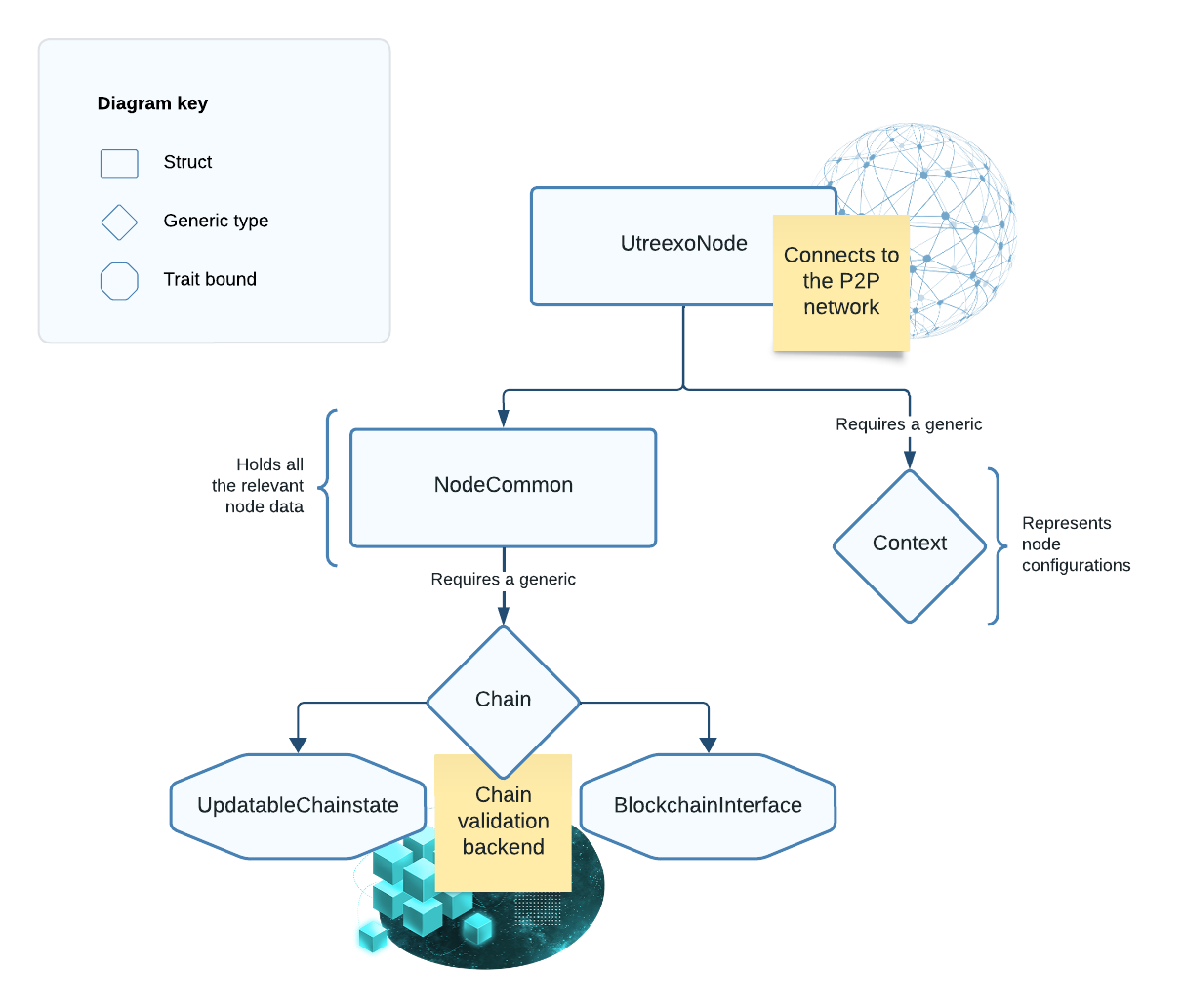UtreexoNode
UtreexoNode is the top-level type in Floresta, responsible for managing P2P connections, receiving network data, and broadcasting transactions. All its logic is found at the floresta-wire crate.
Blocks fetched by UtreexoNode are passed to a blockchain backend for validation and state tracking. This backend is represented by a generic Chain type. Additionally, UtreexoNode relies on a separate generic Context type to provide context-specific behavior. The default Context is RunningNode, which handles the transition between other contexts (it's the highest level context).

Figure 1: Diagram of the UtreexoNode type.
Below is the actual type definition, which is a struct with two fields and trait bounds for the Chain backend.
Filename: floresta-wire/src/p2p_wire/node.rs
// Path: floresta-wire/src/p2p_wire/node.rs
pub struct UtreexoNode<Chain: ChainBackend, Context = RunningNode> {
pub(crate) common: NodeCommon<Chain>,
pub(crate) context: Context,
}The Chain backend must implement the ChainBackend trait, which is just shorthand for the two key traits that define the backend.
// Path: floresta-chain/src/pruned_utreexo/mod.rs
pub trait ChainBackend: BlockchainInterface + UpdatableChainstate {}Each trait defines a distinct responsibility of our blockchain backend:
UpdatableChainstate: Methods to update the state of the blockchain backend.BlockchainInterface: Defines the interface for interacting with other components, such asUtreexoNode.
Both traits are located in the floresta-chain library crate, in src/pruned_utreexo/mod.rs.
In the next section, we will explore the required API for these traits.